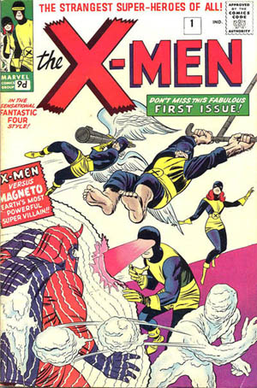These were our heroes in the Silver Age Of Comics but today they have become Hollywood darlings, 40 odd years later. Here is a list of some of those greats.
No matter the creators or the style, comic books are influenced by their surroundings. During World War II, comic book heroes were sterling patriots, often fighting the Axis powers in the name of American freedom. Today comic book heroes face terrorism and an ever expanding understanding for cultural differences in the United States. In the 1960s, they faced scientific expansion, diversity, and the Cold War’s threat.
The 1960s saw the introduction of some of the most popular, crucial characters to the genre. Among the top billing, is Peter Parker. Spider-Man made his first appearance in Amazing Fantasy #15 in 1962 when he was bitten by a radioactive spider. Young Peter Parker differed from most heroes in two significant ways. First, he was a teenager given the starring role. Unlike many teenage characters, Spider-Man was not on the sidebar, taking orders, or following the lead. He fought on his own, taking the name Spider-Man not Spider-Boy. Second, Peter Parker was awkward and geeky rather than smooth and debonair, making him more realistic to fans.
Another character who started off as a youngster was Matt Murdock. He became Daredevil after he lost his sight when he was sprayed with radioactive material, and gained enhancement of his other senses. Like Parker, Murdock was an unpopular kid, who found meaning in his new abilities and a sense of duty to protect the innocent. He followed a vigilante sense of justice, because the judicial system did not always serve what he saw as right. Much like the frustrated youth of the ‘60s, Murdock wanted to change things himself.
Another mold breaker is the team known as the Fantastic Four. Made up of four individuals, they all developed special abilities after exposure to cosmic rays. Unlike usual comic book characters, they did not hide their real identities; rather enjoying a celebrity status versus the anonymity most lived by. Two members were already siblings, but as a foursome, the Fantastic Four became like a family. They looked out for each other, and like any family held grudges, sometimes petty ones, but were still together.
Teamwork was also important to the X-Men. Symbolism abounded in X-Men, a collection of mutants, whose bodies took natural genetic leaps, causing a divide between them and the rest of humanity. X-Men became a vehicle to symbolize racism and prejudice, as well as fear of the unknown during the turbulent 1960s. Many of the main characters were under represented comic characters, including a concentration camp survivor, gay characters, ethnic and racial minorities. At the center of the series, Professor X and Magneto have even been compared to Civil Rights leaders Martin Luther King, Jr. and Malcolm X, respectively.
Exploring two sides of science during the ‘60s, was The Incredible Hulk. Physicist Bruce Banner was blasted by a gamma bomb, developing his alter ego, the Hulk. Taking on a Jekyll and Hyde persona, Bruce/the Hulk bounced between mild mannered scientist and rage filled, short tempered monster. He was the anti-hero, doing many good things, but destructive all the while, providing complexity to the superhero genre.
Another hero lacking the Boy Scout underpinnings is Tony Stark. Iron Man was introduced in Tales of Suspense #39 in 1963. A brilliant inventor, and rich playboy, Stark was kidnapped while testing weapons he created during the Cold War. Effected physically and emotionally by the ordeal, Stark became Iron Man in an effort to protect those in harm’s way. The comic focused particularly on American business practices and technology, as well as the threat of communism and the Cold War.
The worth of these characters is proven by their strength in popularity forty years after their creation. They’ve all been the stars of blockbuster films in the past decade, along with video games, novels, cartoons, and more. While their circumstances may change, they will forever be remembered for the dynamic effect they had on the comic book industry in the 1960s.




